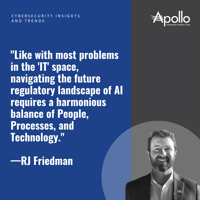President Biden's recent Executive Order on Artificial Intelligence (AI) marks a crucial step in...
Navigating the Challenges and Risks of AI in Business
In light of President Biden's recent Executive Order on AI, it's vital to explore the nuances and challenges that AI presents in the commercial realm. AI's broad and somewhat undefined commercial scope necessitates an in-depth examination, especially concerning its business implications.
Internal AI Use and Emerging Risks
Firms employing AI for productivity or protection largely face internal risks. However, as we evolve with AI, concerns such as data misuse and unintended consequences will broaden. The construction of private data sets for AI model training is a case in point. This data, if not governed correctly, can create substantial business risks.
AI in Customer Service and Stakeholder Engagement
When AI models interact with customers or stakeholders, the risks are multifaceted and need careful management. The challenge lies in understanding and mitigating these risks effectively.
AI as a Defensive and Offensive Tool
In scenarios where AI is weaponized, companies must rigorously assess and manage risks. Current tools to protect content and identify deep fakes are nascent and not widely implemented at the enterprise level. This area requires focused attention as these technologies evolve.
The Limitations of Standards
While developing standards, as suggested in the Executive Order, is a step forward, they often remain voluntary and thus have inherent weaknesses. In a global context, if certain players - be it developing nations or 'bad actors' - disregard these standards, organizations find themselves in a familiar defensive posture.
The Path Towards Autonomy
As AI progresses towards greater autonomy and integration with other technologies, the scope of potential issues expands. The reliance on standards and technologies to identify risks effectively and economically will become increasingly crucial.
Key Areas of Concern
- Privacy & Bias: Organizations using biased data sets for training AI models can inadvertently create skewed outcomes. The reliance and application of these data sets demand scrutiny.
- Shadow AI: This refers to AI tools used by employees beyond the control of management. Such scenarios can lead to inadvertent exposure of sensitive data, including intellectual property.
- Deep Fakes and Disinformation: The advancement in creating realistic AI-generated content amplifies risks like business email compromise (BEC) and transfer fraud.
- Adversarial Attacks: Advanced AI technologies provide adversaries with potent tools to launch large-scale attacks.
- Insider Threats and Human Factors: Dependence on AI models and data sets opens vulnerabilities to malicious human actions, whether it's data poisoning, software vulnerabilities, or theft of the AI model itself.
- Emerging Risks and Cybersecurity Innovation: As technological innovation persists, new business models and risks will surface. Cybersecurity innovation is well-funded among threat actors, leading to sophisticated and escalating attacks. A recent example is the manipulation of license plate recognition software, a key tool in identifying stolen vehicles.
- Current Battleground: Organizations today rely heavily on secure ways to access their data; AI based MFA and Biometric Authentication Attacks have begun and represent real risks today to organizations.
The landscape of AI in business is complex and ever-evolving. While the Executive Order provides a framework for addressing some of these challenges, businesses must remain vigilant and proactive. Understanding and managing the risks associated with AI, from internal applications to broader societal impacts, is crucial for safeguarding the integrity and security of our technological future.





